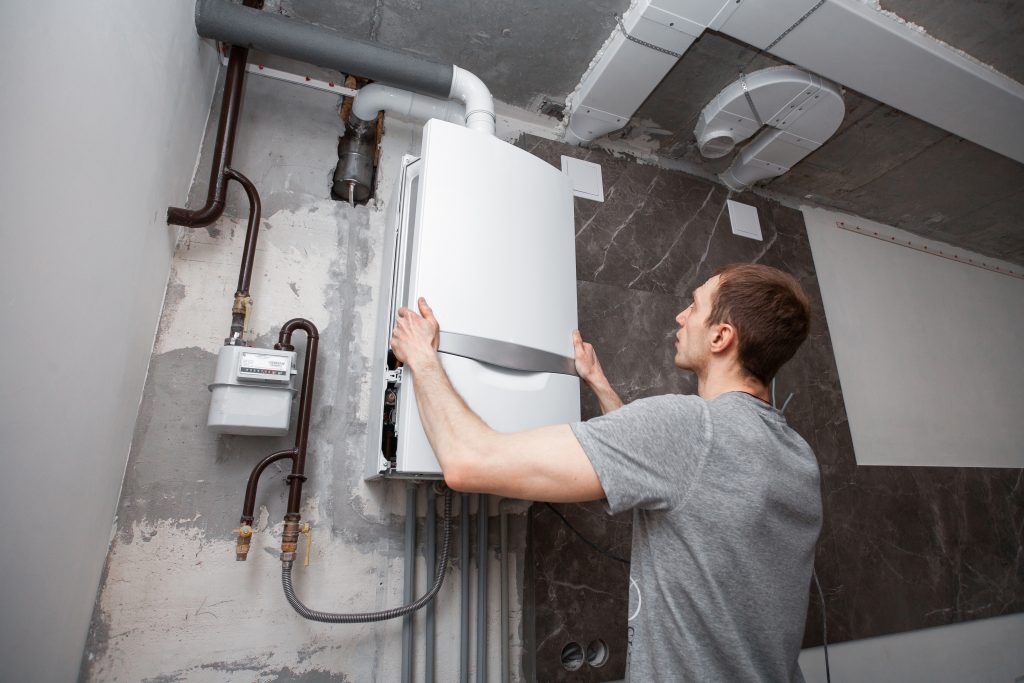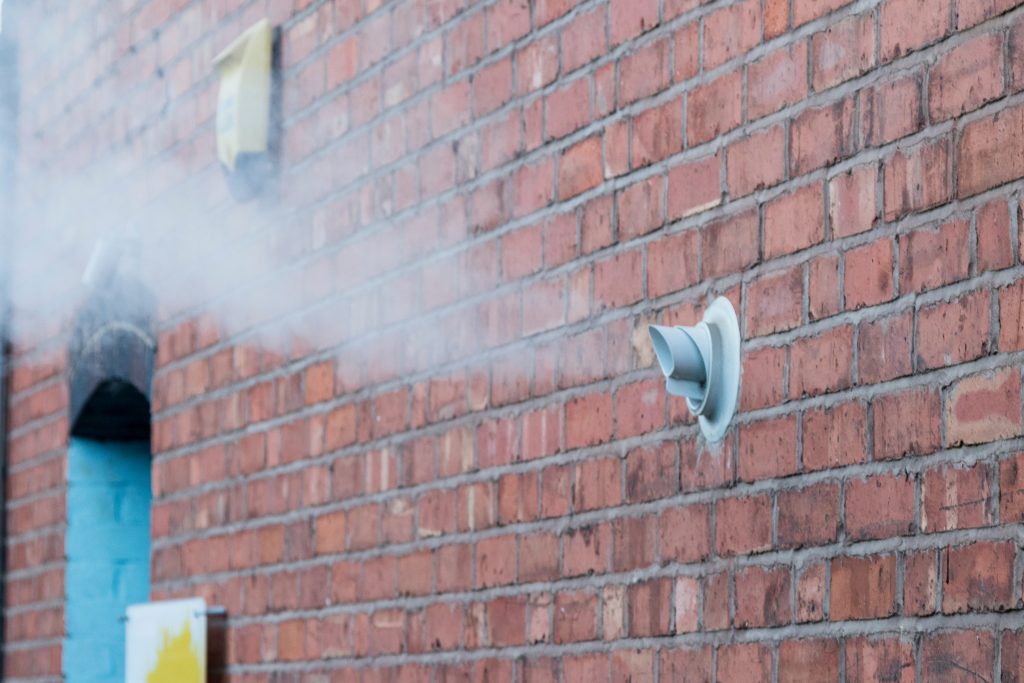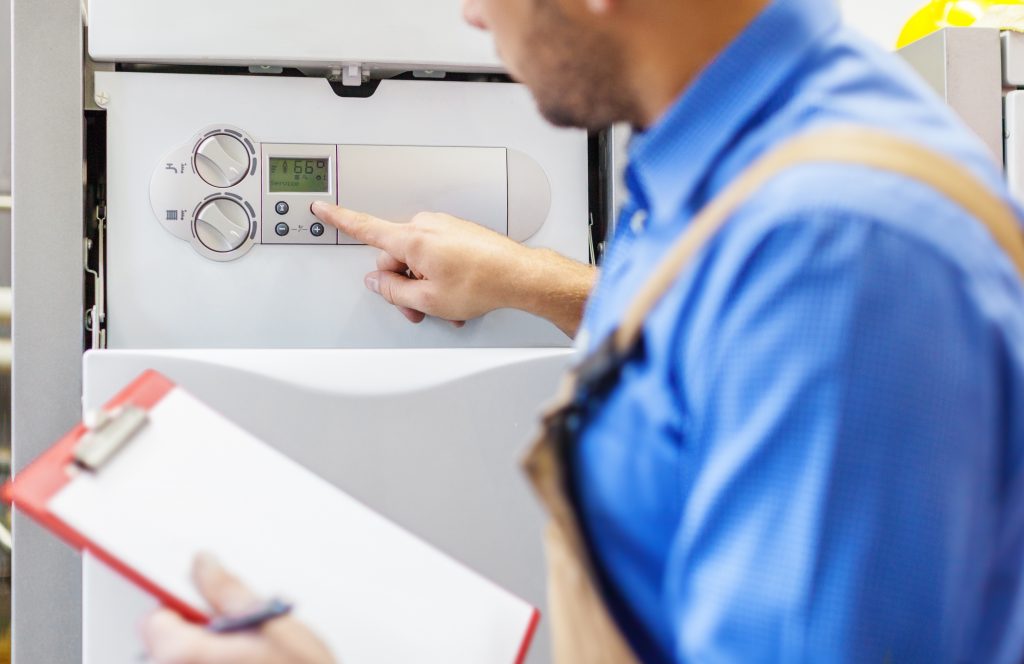A householder’s guide to condensing and non-condensing boilers
In ECO4, it is only possible to replace (upgrade) boilers which are non-condensing as they are considered inefficient heating systems. They can be upgraded to an efficient, condensing boiler. All newly installed boilers under ECO4 must be condensing.
According to the ECO4 guidelines, installers cannot undertake a boiler replacement with rented properties. The property must be occupied by the owner for this install to be possible. However, you can have first time central heating installed if your property is rented, owned, or you live in social housing. This is only if you currently do not have a central heating system (a boiler and radiators) at your property.

Are you eligible for a free boiler installation?
If you know you have an ECO4 qualifying benefit and a non-condensing boiler or no central heating system, please get in touch with us today on 0800 024 8505 Option 1. You can read more about ECO4 and how to qualify here. ECO4 operates with a whole house approach, meaning you will always need to have insulation installed as well as a boiler or other heating system. If your property is already well insulated, this would make you less likely to qualify. Please give us a call today to assess your eligibility.
So, how can you tell whether your boiler is condensing or non-condensing?
If you have a boiler manual this would be the first place to look and an easy solution.
PCDB database
If you do not have a manual to hand, you can find the relevant information on your boiler’s data plate. This is an information section, sometimes in the form of a sticker, affixed onto the boiler. Input this information into the PCDB database here. This is a detailed boiler characteristics database. Whether the boiler is condensing or not is about halfway down the page once you have selected your boiler type.
Condensate pipe
Condensing boiler’s heat exchangers create condensation, and the water vapour leaves the boiler through a condensate pipe. This is usually a white plastic pipe, similar to those found on a washing machine or sink waste pipe which go outside into a drain. If you have a white plastic pipe underneath your boiler, this is probably a condensate pipe.
Flue
You can also identify the boiler type by its flue. This is a pipe to remove exhaust gases to outside your home. Your flue will be located on the outside of your walls or roof where your boiler is fitted. If your boiler has a metal flue, then it is most likely a non-condensing boiler. Condensing boilers tend to have white or black plastic flues like the one pictured.

Year of manufacture
If the year of manufacture is on the data plate, this is a clear indicator of whether or not the boiler is condensing. According to boiler manufacturer Viessmann, “Dating from 1st April 2005, all new gas boilers fitted in the UK are required to be condensing models… The regulations state that all new boilers installed in domestic properties must be high-efficiency condensing designs”. So, if your boiler was fitted on or after this time, you can be pretty confident it is condensing.
What is the difference between condensing and non-condensing boilers?
Condensing boilers are simply more efficient than traditional boilers. Non-condensing models lose heat in the form of hot gases that escape up the flue. Condensing boilers are designed to minimise this heat loss. This efficiency will reduce both your energy bills and your carbon footprint.
Energy saving measures and heating controls
As of April 2018, all new combi boilers also had to include an energy saving measure, which could be any of the following:
Flue gas heat recovery system
This is a device in between the boiler and flue. It collects any remaining heat which would otherwise leave via the flue and be wasted. In many cases, this technology is already built into new boilers, and therefore does not come with any additional cost.
Smart thermostat

Load compensating thermostat
This type of thermostat adjusts the temperature of your radiators based on how warm your home is. When your home is cold, it will make your radiators hotter, and when your home is approaching the desired temperature, it will make them cooler.
Weather compensating thermostat
This technology is similar to a load compensating thermostat, but it adjusts the temperature of your radiators in accordance with the outside temperature.
How often should a boiler be replaced?
The average boiler lifespan is around 15 years. If it is well maintained and has a yearly service this can be increased. If your boiler is taking longer to heat up, it is not making the property as warm as usual, or it is making any unfamiliar noises this can indicate you are due a replacement.
What happens if you don’t regularly service your boiler?
The most common cause of boiler failure is lack of maintenance. With a service, you can catch problems earlier before they become serious or very expensive. Boiler services are cheaper than boiler replacements. The most important reason for boiler services is your safety as faulty boilers can be extremely dangerous. Over 100 people die every year from carbon monoxide poisoning. During the service, the engineer will check there is no risk of a gas leak.
What does a boiler service involve?

A boiler service is an annual check and test conducted to ensure your boiler is running correctly. All boiler manufacturers recommend this service. It is often a requirement of your warranty, and your warranty will be void if you do not have the boiler annually serviced. Boiler services can only be carried out by a Gas Safe Register engineer. You can check an engineer is registered by asking to see their ID card and using the Gas Safe Register online here.
Your boiler will first be visually inspected to check for any leaks or damage. The engineer will then check the main components of the boiler and the flue. They will check the gas pressure and fire up the boiler to check for any faults. On average, your boiler service will take one hour.
Boiler maintenance tips for householders
According to Gas Safe, here is some advice for in between services which you can implement to help reduce the likelihood of a breakdown:
• Bleed your radiators. To “bleed” a radiator means releasing air that has become trapped. If your radiators have cold patches at the top then air is trapped in the system. To bleed a radiator, turn your central heating off and make sure the radiators are not at all hot, locate the bleed valve, insert the bleed key, listen for a hiss as the air escapes the radiator and wait until it stops. Sometimes water can escape during this process, so be sure to place a towel underneath the radiator incase. However, if you have to bleed your radiators regularly there is probably an underlying issue with the system and you should consult an engineer.
• Insulate the pipes. British Gas say that “Most DIY shops sell ready-made pipe lagging that slip over your pipes in minutes and cost around £1 a metre.” You can protect the condensate pipe so the water within it doesn’t freeze and expand. Insulating the pipes in areas such as your loft or garage will also minimise heat loss.
• Check the pressure. Over time, boilers lose pressure. This causes them to run less efficiently. You can check the pressure gauge on your boiler and alter it yourself. Your boiler manual will have instructions on how to do this, or you can ask an engineer or plumber. If the pressure is too high, then you have an increased chance of a leak. If boiler pressure is too low, the system will not function as well as it could. Bleeding radiators will also reduce this pressure.
